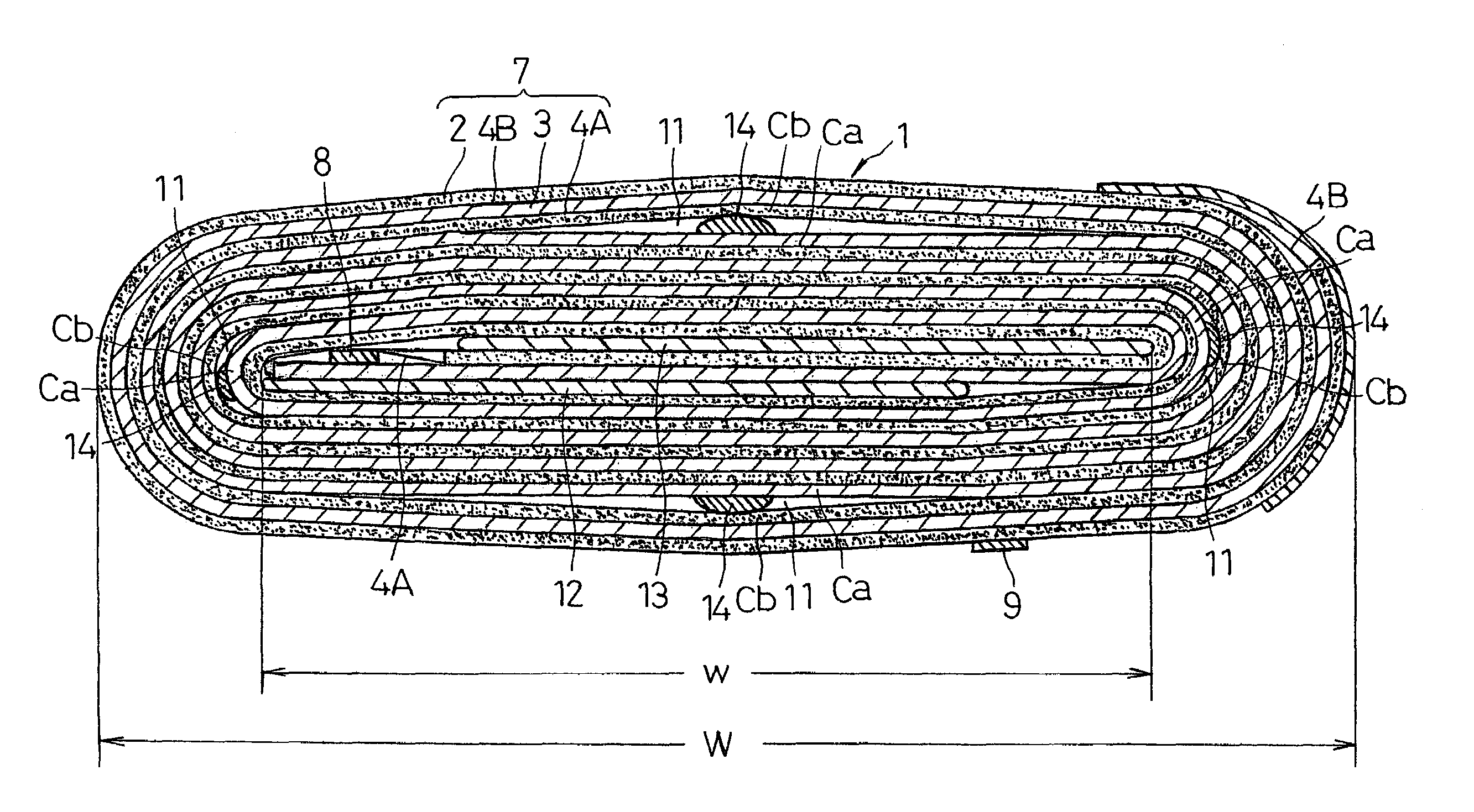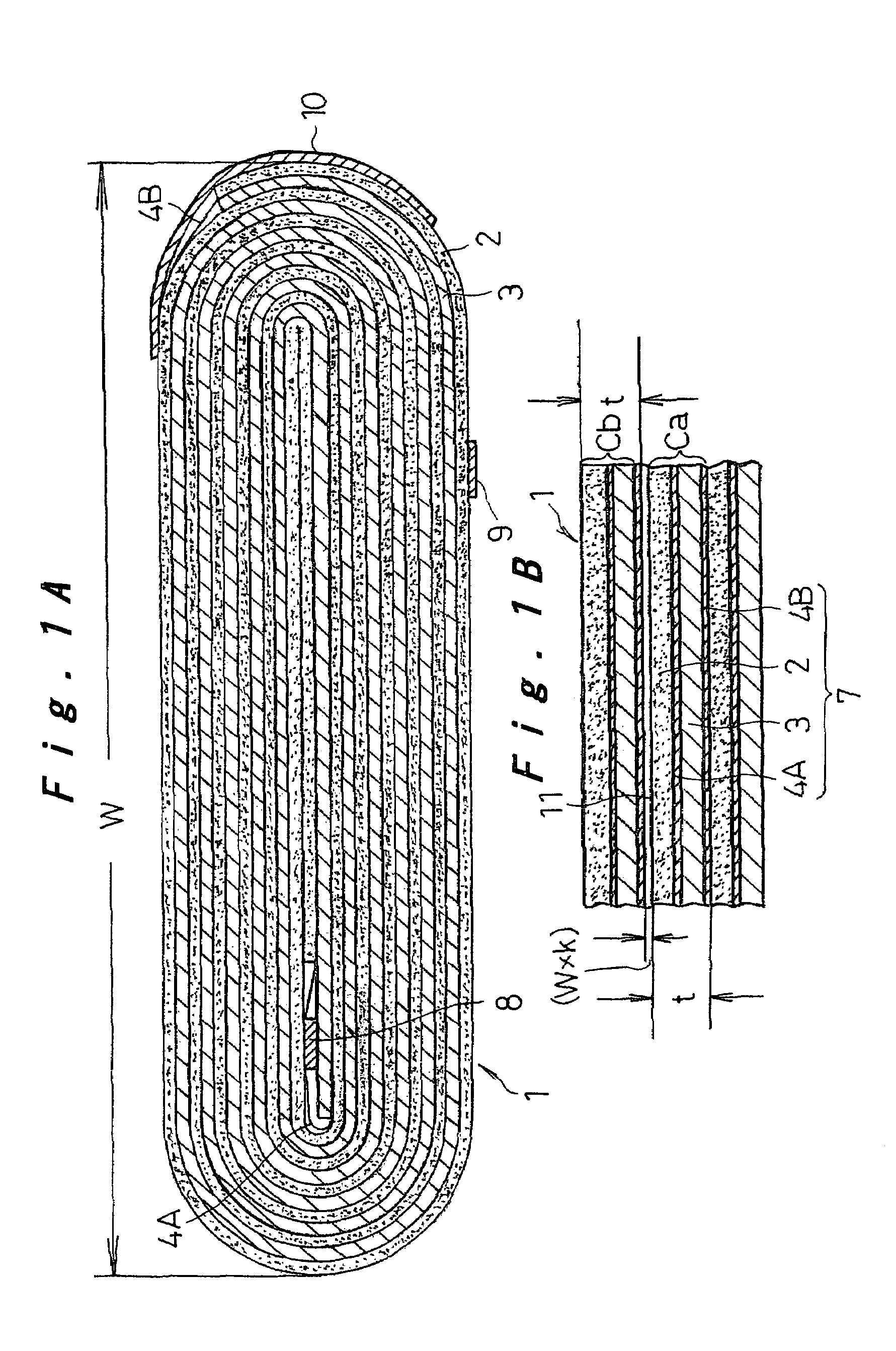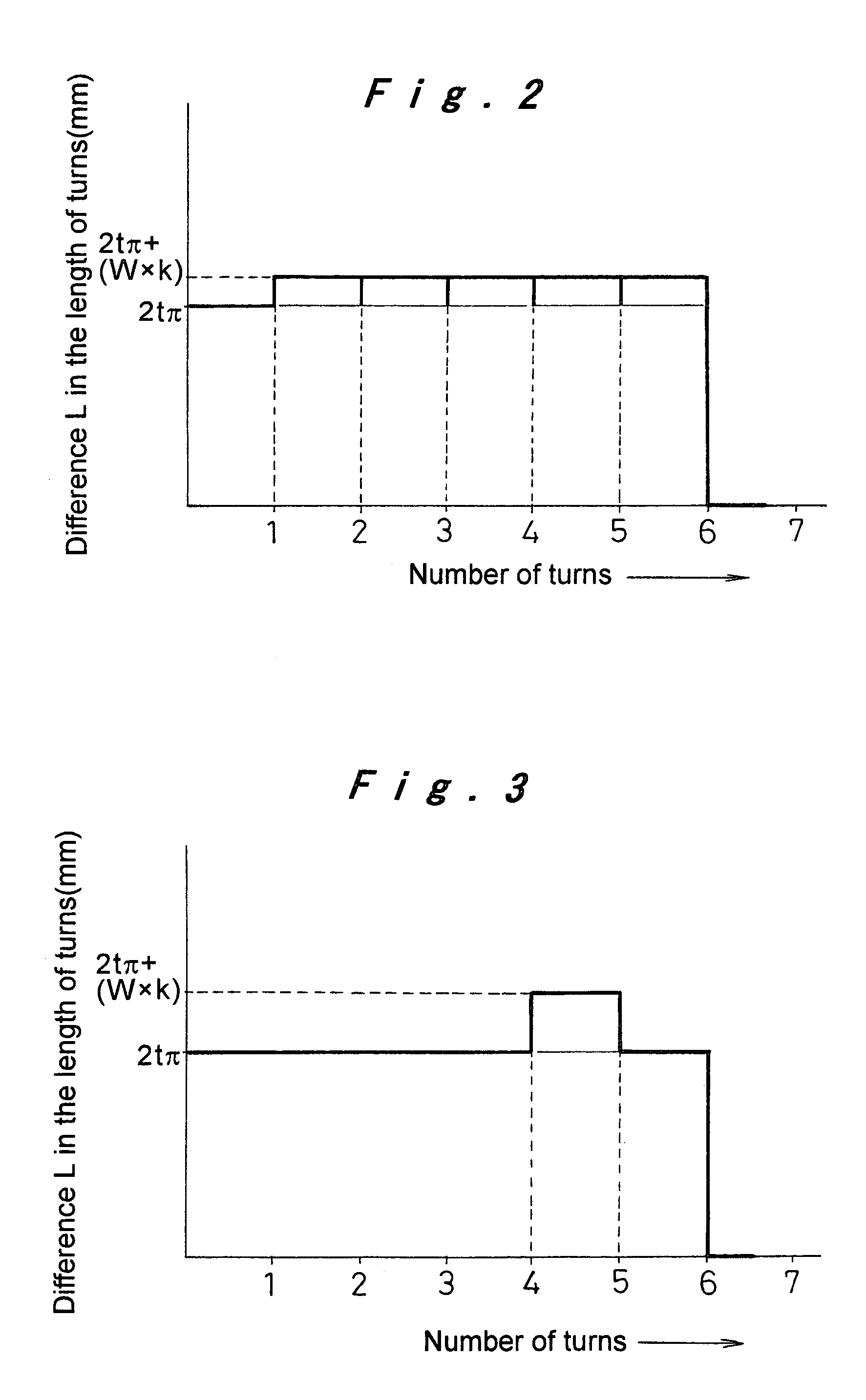Battery and method for manufacturing spiral electrode group for use therein
a spiral electrode and spiral electrode technology, applied in the field of batteries, can solve the problems of deterioration or variation of battery capacity, uneven electrode reaction, and relative low heavy load characteristics, and achieve the effects of preventing uneven charge/discharge reaction, high load characteristics of batteries, and smooth and evenly impregnated
- Summary
- Abstract
- Description
- Claims
- Application Information
AI Technical Summary
Benefits of technology
Problems solved by technology
Method used
Image
Examples
first embodiment
[0035]Preferred embodiments of the present invention will be hereinafter described with reference to the drawings. FIG. 1A is a cross sectional view of a wound electrode group 1 used for a battery according to the invention, and FIG. 1B is an enlarged view of part of FIG. 1A. This embodiment shows one example of a prismatic wound electrode group 1 used for a prismatic battery. The assembly 1 consists of an electrode stack 7 including a strip of positive electrode plate 2, negative electrode plate 3, and a pair of separators 4A, 4B interposed therebetween, wound into a shape having an oval cross section as shown in FIG. 1A. The drawing shows one example of a prismatic wound electrode group 1 for a lithium rechargeable battery; leads 8, 9 are attached to the winding start of the negative electrode plate 3 and the winding end of the positive electrode plate 2, respectively. The winding end of both electrode plates 2, 3 is fixed with a fixing tape (fixing member) 10 attached thereto.
[00...
second embodiment
[0060]FIG. 7A is a cross sectional view of a wound electrode group 30 used for the battery according to the invention, in a state after a winding process in the manufacturing method of the assembly, and FIG. 7B is a cross sectional view of the assembly 30 constructed and used as the battery. This embodiment shows one example of a cylindrical wound electrode group 30 having a circular cross section used for a cylindrical battery; elements corresponding to those shown in FIG. 1A, FIG. 1B, and FIG. 4 are given the same reference numerals in FIG. 7A and FIG. 7B. Also, FIG. 7A and FIG. 7B are schematic representations as with FIG. 1A, FIG. 1B and FIG. 4 for ease of understanding of the structure.
[0061]Manufacturing of the cylindrical wound electrode group 30 starts with a winding process: Strips of positive and negative electrode plates 2, 3 and a pair of separators 4A, 4B interposed therebetween are laminated to form an electrode stack 7; the stack is fixed at a portion one half turn fr...
third embodiment
[0068]FIG. 8A is a cross sectional view of a wound electrode group 33 used for the battery according to the invention, in a state after a winding process in the manufacturing method of the assembly, and FIG. 8B is a cross sectional view of the assembly 33 constructed and used as the battery. This embodiment shows one example of a rounded prismatic wound electrode group 33 having a substantially square cross section with four rounded corners, used for a rounded prismatic battery; elements corresponding to those shown in FIG. 1A, FIG. 1B, and FIG. 4 are given the same reference numerals in FIG. 8A and FIG. 8B. Also, FIG. 8A and FIG. 8B are schematic representations as with FIG. 1A, FIG. 1B and FIG. 4 for ease of understanding of the structure.
[0069]Manufacturing of the rounded prismatic wound electrode group 33 starts with a winding process: Strips of positive and negative electrode plates 2, 3 and a pair of separators 4A, 4B interposed therebetween are laminated to form an electrode ...
PUM
| Property | Measurement | Unit |
|---|---|---|
| diameter | aaaaa | aaaaa |
| diameter | aaaaa | aaaaa |
| height | aaaaa | aaaaa |
Abstract
Description
Claims
Application Information
 Login to View More
Login to View More - R&D
- Intellectual Property
- Life Sciences
- Materials
- Tech Scout
- Unparalleled Data Quality
- Higher Quality Content
- 60% Fewer Hallucinations
Browse by: Latest US Patents, China's latest patents, Technical Efficacy Thesaurus, Application Domain, Technology Topic, Popular Technical Reports.
© 2025 PatSnap. All rights reserved.Legal|Privacy policy|Modern Slavery Act Transparency Statement|Sitemap|About US| Contact US: help@patsnap.com



